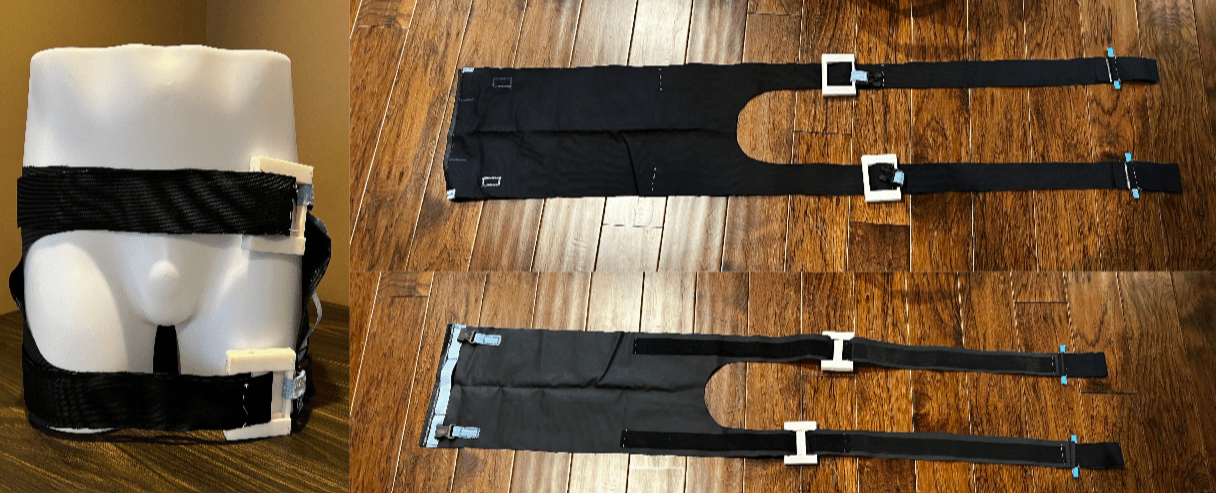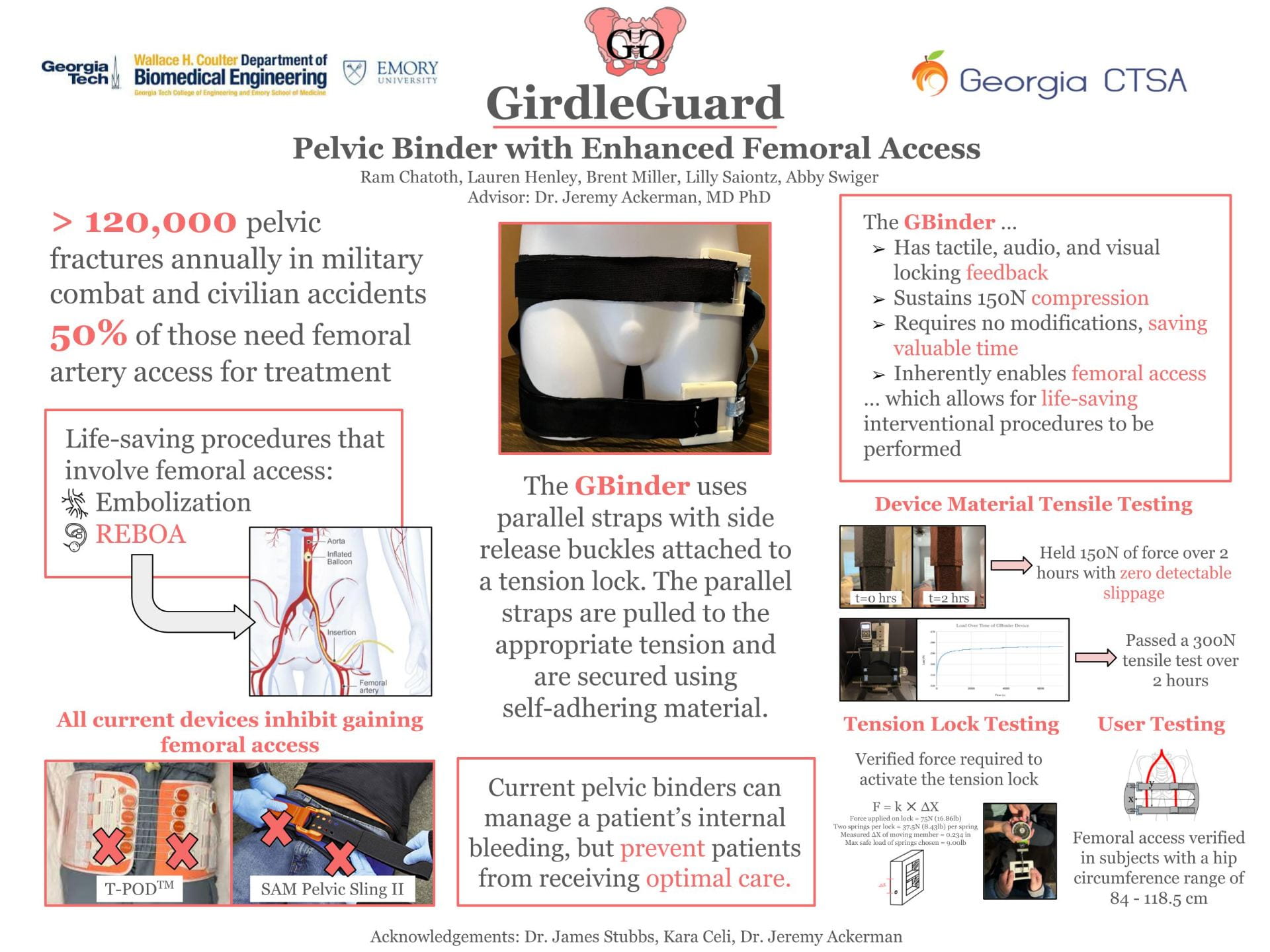Get to know our team on LinkedIn:
Ram Chatoth, Lauren Henley, Brent Miller, Lilly Saiontz, Abigail Swiger
X Marks the Spot
Pelvic Circumferential Compression Device with Enhanced Femoral Access
Project Description:
Pelvic fractures are caused by high-energy blunt force traumas such as car accidents, falling from a high elevation, and military explosives. The pelvic space contains many arteries and veins that can be damaged with a pelvic fracture, leading to a high risk of internal hemorrhage. This is especially present when the pelvic volume increases due to the fracture, such as in an open-book fracture. This can be fatal if the hemorrhaging is left untreated, and the best way to stabilize the patient’s bleeding is by using pelvic circumferential compression devices, which compress the pelvis to its original anatomical state until the patient can undergo further treatment.
Common procedures to treat hemorrhaging include embolization and Resuscitative Endovascular Balloon Occlusion of the Aorta (REBOA), which require or strongly favor access to the femoral artery, which is obstructed due to the current pelvic binder designs. Current solutions to this problem are to remove the binder while gaining femoral access or cutting holes to allow for access. Despite these improvised solutions, an unaddressed problem remains: Patients with pelvic fractures are treated by healthcare providers with pelvic compression devices that inhibit gaining femoral access, which is often required for further treatment.
The proposed solution is to design a pelvic binder with enhanced femoral access for life-saving procedures. While rectifying this issue, the device must retain its original function. It must maintain adequate compression over the period it is used without causing skin necrosis, and it cannot inhibit X-ray visibility for examination. It should also be ensured that the access points lie over the femoral arteries. Overall, the device should include the same characteristics as previous devices while allowing for enhanced femoral access.



